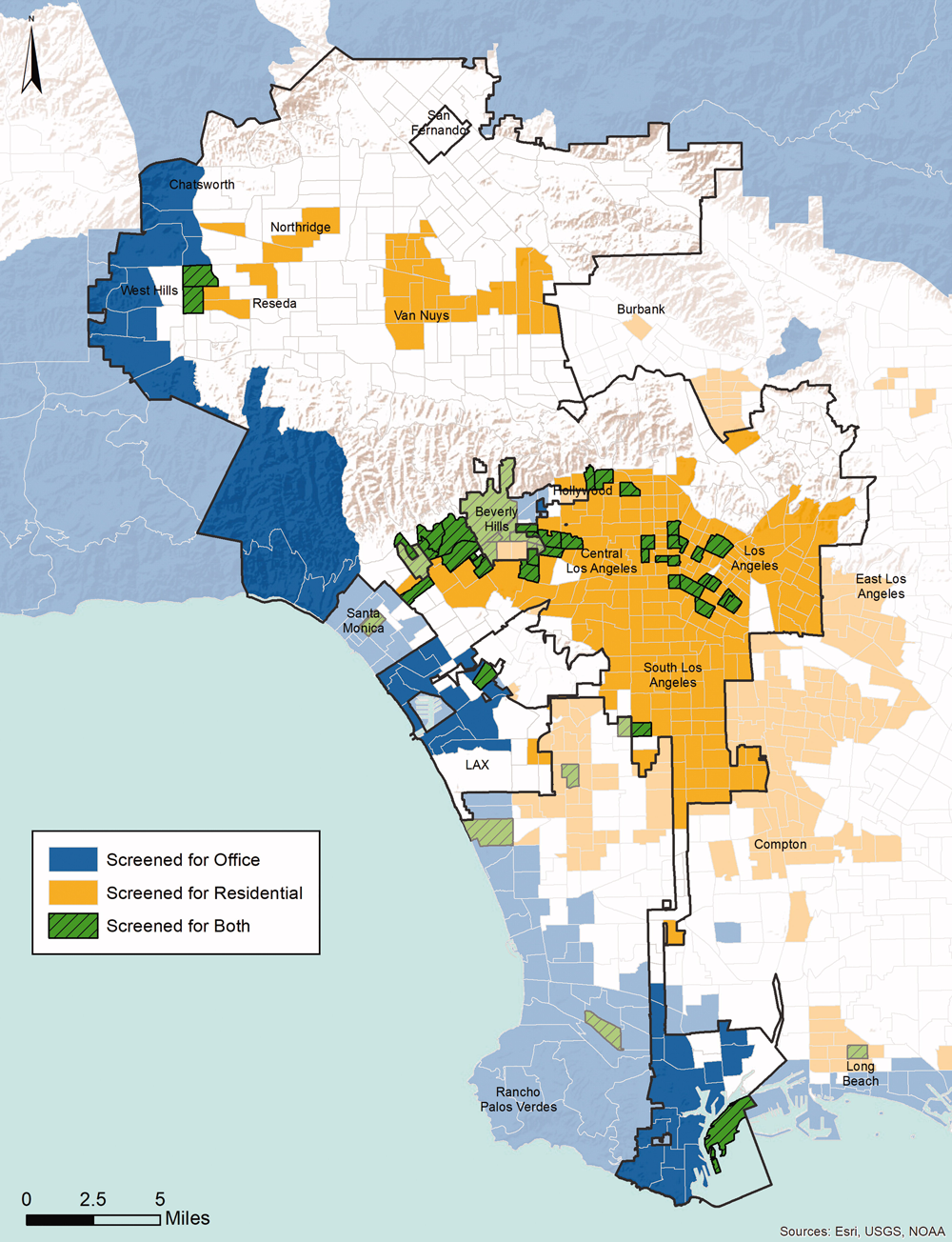Uncovering JAPA
Changing California's Way of Measuring Traffic Could Equal More Housing

How do the ways that cities measure transportation affect what gets built?
Jamey M. B. Volker, Amy E. Lee, and Dillon T. Fitch explore this question in their article "Streamlining the Development Approval Process in a Post-Level of Service Los Angeles."
Streamlining Development Through VMT Metrics
In the Journal of the American Planning Association (Vol. 85, No. 2), the authors argue that switching from Level of Service (LOS) to Vehicle Miles Traveled (VMT) could streamline the development process in California, particularly in areas with low VMT. The authors suggest that a more streamlined development process could facilitate much-needed housing construction in the state.
LOS is a measure of vehicular congestion that was first introduced in 1965 and has been the dominant transportation study metric ever since. VMT is a measure of the number of miles traveled by each vehicle in a particular area.
Like many states in this country, California employs LOS metrics to assess development proposals, particularly in adherence with the state's environmental policy act. Because of its environmental requirements, California's environmental policy act has significant effects on new construction.

Low-VMT transportation analysis zones meeting map-based screening thresholds for office and residential projects. Figure 3 from "Streamlining the Development Approval Process in a Post-Level of Service Los Angeles," JAPA Vol. 85, No. 2. Sources Esri, USGS, and NOAA.
LOS to VMT: Streamlining Development Process
Because LOS is used so frequently, it plays a huge role in determining how and where development happens. If environmental studies demonstrate that a proposed development would cause a significant traffic increase, a developer is forced to pay for improvements to reduce traffic. This, in turn, increases the per-unit development cost. That increase also raises the price to occupy that unit.
Increasing development costs, write the authors, "incentivizes development at the fringe rather than in denser urban areas because there is cheaper land and less baseline congestion." Development at the edges leads to urban sprawl, the extension of roadways, and increases VMT.
With the negative impacts of LOS, would VMT be a better metric for the development process?
Using Los Angeles as a case study, the authors examined whether switching from LOS to VMT would streamline the development process in California. They analyzed residential, office, and retail development projects for which environmental impacts were prepared between 2001 and 2016. They were able to locate the environmental impact reports for 153 projects.
The authors applied screening criteria to identify projects in low-VMT areas. This allowed them to determine whether transportation impact analyses would have been required for those projects if VMT was used in the development process. When comparing their results to the actual LOS-based results that were required, 96 of those 153 projects could have avoided a transportation impact study to comply with California's environmental policy act. Additionally, 62 of those 96 projects could have avoided LOS-related mitigation measures, and 4 projects could have potentially avoided an environmental impact analysis.
Affordable Housing Through Streamlined Development
So, who benefits from switching from LOS to VMT to streamline the development process?
Many different answers could arise from this question. The authors imply that more development happens at the edges of urban areas when LOS metrics are applied, adding to urban sprawl. Developers would benefit by not being forced to pay for additional studies and traffic improvements that are pushed onto consumers.
One of the most critical points presented in the article is that streamlining development processes could be beneficial for potential urban residents and those seeking affordable housing. While the cost of a transportation study or an environmental impact report is not the only reason for a lack of affordable housing, making it easier to redevelop existing areas can help increase housing options.
Top image: Traffic on the Harbor Freeway in Los Angeles (CC BY-SA 4.0), https://commons.wikimedia.org/w/index.php?curid=176623.


